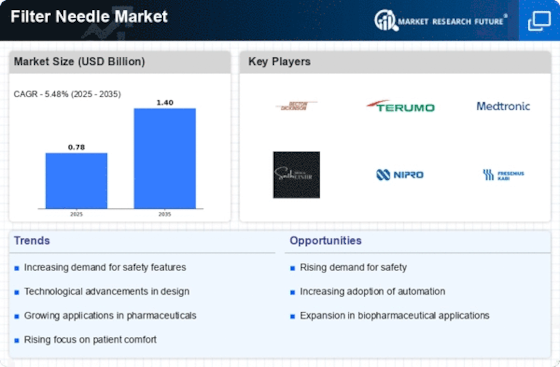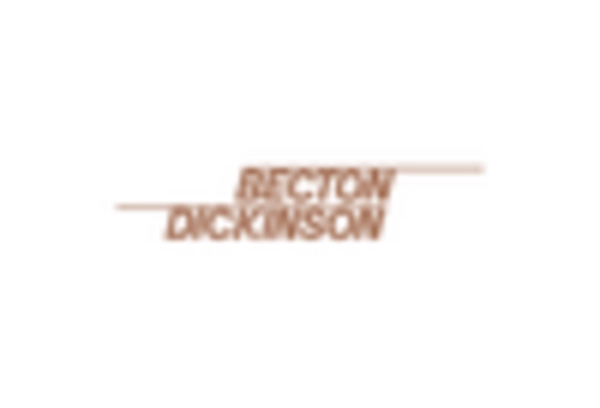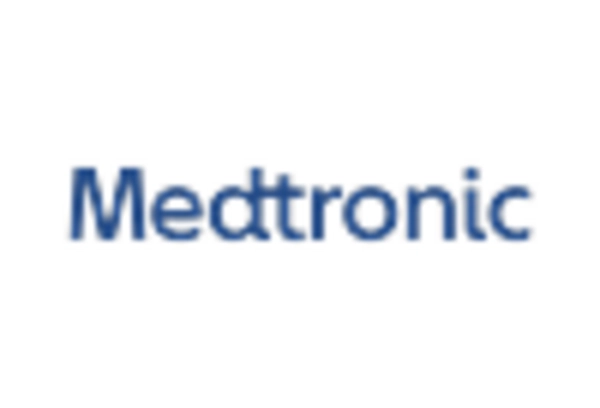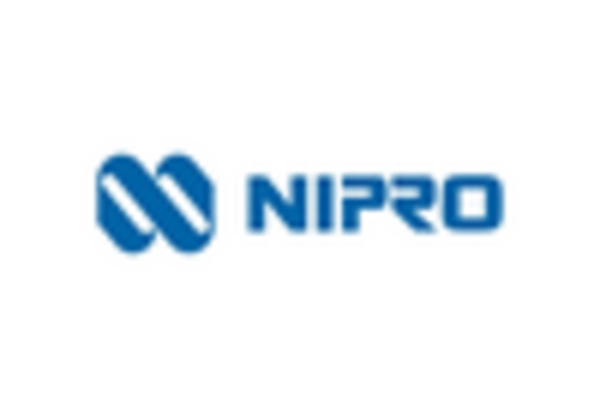Expansion of Healthcare Infrastructure
The Filter Needle Market is poised for growth due to the expansion of healthcare infrastructure in various regions. As countries invest in improving their healthcare systems, the demand for medical devices, including filter needles, is likely to increase. Enhanced healthcare facilities are expected to adopt advanced medical technologies, which include filter needles for drug delivery and administration. This expansion is particularly evident in emerging markets, where rising healthcare expenditures are facilitating the acquisition of modern medical equipment. Analysts suggest that this trend could lead to a substantial increase in the market size, as more healthcare providers seek to enhance their service offerings. Consequently, the filter needle market may experience a robust growth trajectory, driven by the ongoing development of healthcare infrastructure.
Growing Awareness of Infection Control
The Filter Needle Market is significantly influenced by the growing awareness of infection control practices. Healthcare professionals are increasingly recognizing the importance of using filter needles to minimize the risk of contamination during drug administration. This heightened awareness is leading to a shift in purchasing behaviors, with more healthcare facilities opting for filter needles as a standard practice. The market is likely to benefit from this trend, as institutions prioritize safety and efficacy in their medical procedures. Furthermore, educational initiatives aimed at promoting best practices in infection control are expected to contribute to the growth of the filter needle market. As a result, the demand for high-quality filter needles is anticipated to rise, reflecting a broader commitment to patient safety.
Rising Demand for Chronic Disease Management
The Filter Needle Market is witnessing a surge in demand driven by the increasing prevalence of chronic diseases. Conditions such as diabetes, cancer, and cardiovascular diseases require consistent and effective management, which often involves the use of filter needles for drug delivery. As the global population ages, the incidence of these chronic conditions is expected to rise, further propelling the demand for filter needles. Market analysts project that the market could reach a valuation of over 1 billion dollars by 2027, reflecting the growing need for efficient medical devices in chronic disease management. This trend underscores the importance of filter needles in ensuring that patients receive the necessary treatments in a safe and effective manner.
Regulatory Compliance in Filter Needle Market
Regulatory compliance plays a crucial role in shaping the Filter Needle Market. Stringent regulations imposed by health authorities ensure that filter needles meet safety and quality standards. Compliance with these regulations not only enhances product credibility but also fosters consumer trust. As healthcare systems worldwide emphasize patient safety, manufacturers are compelled to adhere to these guidelines, which may lead to increased operational costs. However, this compliance is likely to result in higher quality products, ultimately benefiting the market. The demand for filter needles that comply with international standards is expected to rise, as healthcare providers seek reliable and safe options for their patients. This trend indicates a potential shift towards more regulated and standardized products in the filter needle market.
Technological Advancements in Filter Needle Market
The Filter Needle Market is experiencing a notable transformation due to rapid technological advancements. Innovations in materials and manufacturing processes are enhancing the performance and safety of filter needles. For instance, the introduction of advanced filtration technologies is improving the efficacy of drug delivery systems. As a result, healthcare providers are increasingly adopting these innovative solutions to ensure patient safety and treatment effectiveness. The market is projected to grow at a compound annual growth rate of approximately 6.5 percent over the next five years, driven by these technological improvements. Furthermore, the integration of smart technologies, such as IoT-enabled devices, is likely to revolutionize the way filter needles are utilized in clinical settings, thereby expanding their applications in various medical fields.


















Leave a Comment